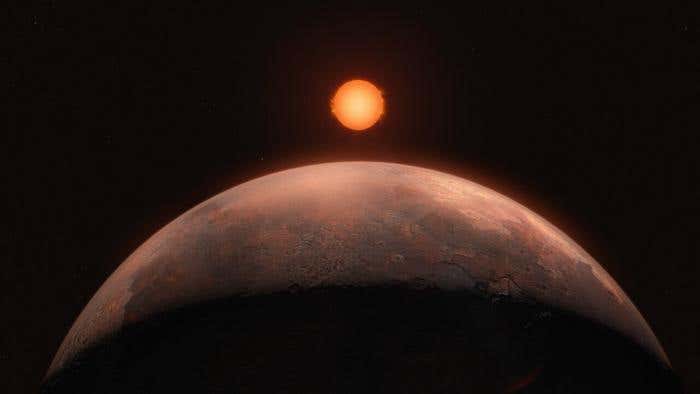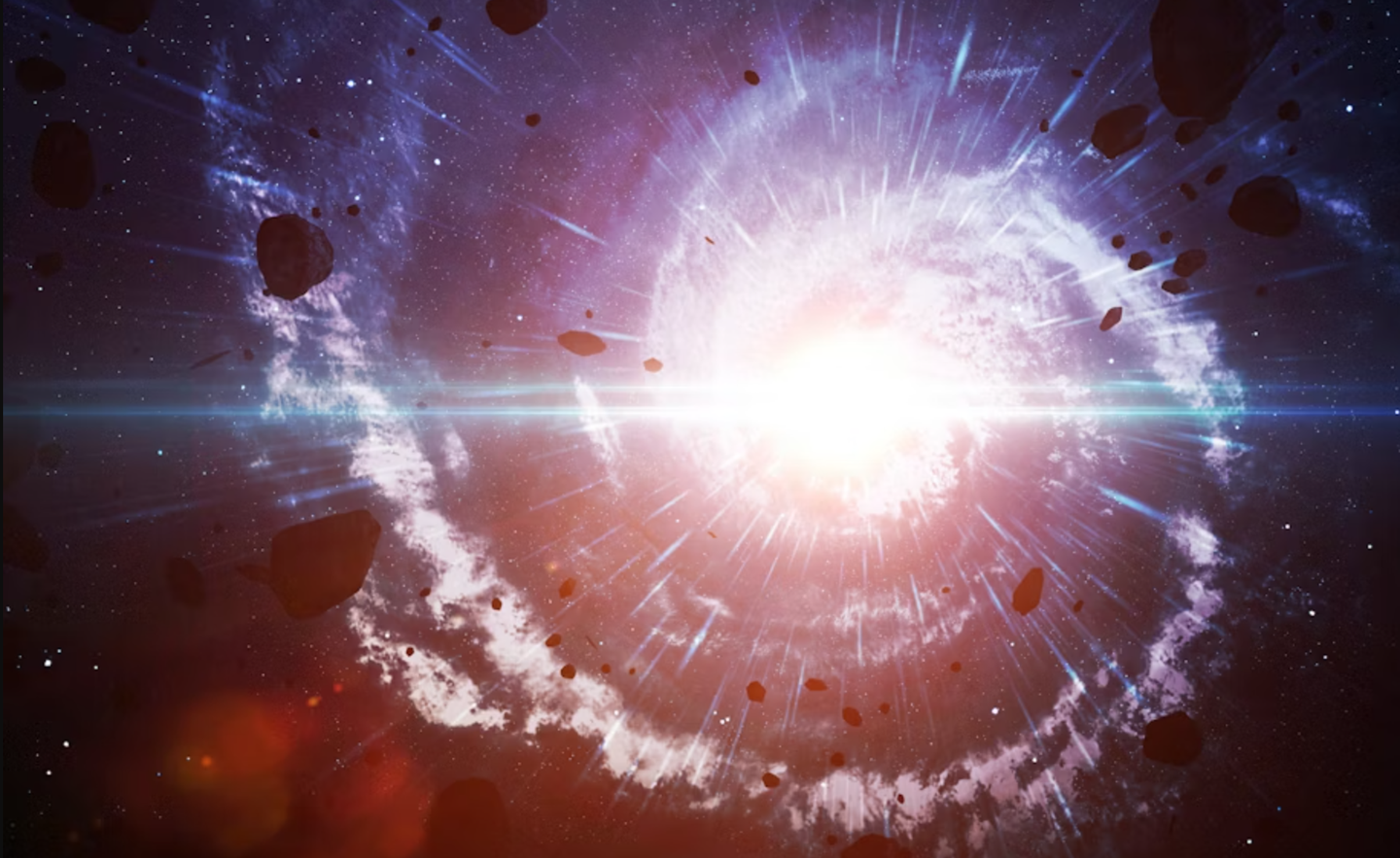Scientists discover new exoplanet orbiting closest single star to our Sun
Astronomers uncover a sub-Earth planet orbiting Barnard’s Star, with hints of three more candidates, expanding the hunt for habitable worlds.

Using advanced telescopes, researchers have discovered a sub-Earth planet orbiting Barnard’s Star, with signs of additional planets nearby. The findings showcase the potential of modern astronomy in exploring our cosmic neighborhood. (CREDIT: ESO/M. Kornmesser)
The search for planets beyond our solar system has taken an exciting leap forward, thanks to advancements in space missions and ground-based instruments. Observatories and tools such as Kepler, TESS, CHEOPS, HARPS, and ESPRESSO have revolutionized the detection and characterization of Earth-like exoplanets. These efforts are moving humanity closer to identifying an Earth twin—a planet with conditions similar to our own.
In recent years, scientists have focused their search on temperate, Earth-like planets orbiting nearby stars. Published in the journal, Astronomy & Astrophysics, One significant breakthrough came with the discovery of Proxima Centauri b, a planet in the habitable zone of the closest star to the Sun.
This milestone shifted attention to stars in our solar neighborhood, particularly the abundant M dwarfs. Representing about 80% of the stars near us, these cooler, dimmer stars have closer habitable zones, making them ideal candidates for detecting rocky planets.
The ESPRESSO spectrograph, operational since 2018 at the Very Large Telescope (VLT) in Chile, has played a pivotal role in this research. With its unprecedented precision, ESPRESSO has identified Earth-mass and sub-Earth-mass planets. Among its findings are Proxima d, a planet twice the mass of Mars, and L98-59 b, a planet with half the mass of Venus. Such discoveries highlight the potential of current technologies to uncover smaller, rocky worlds.
Barnard’s Star, the closest single star to our Sun, has been a focus of scientific curiosity for over a century. Located just six light-years away, this M dwarf’s proximity and characteristics make it a prime candidate for exoplanet searches.
Recent observations using ESPRESSO have unveiled an intriguing planetary system around Barnard’s Star, including one confirmed exoplanet and three additional candidates.
The confirmed planet, known as Barnard b, is at least half the mass of Venus. Orbiting its star in just 3.15 Earth days, it lies far too close to support liquid water on its surface. The planet’s temperature is estimated at 125 °C, making it inhospitable by Earth standards.
“Barnard b is one of the lowest-mass exoplanets known,” said Jonay González Hernández, lead author of the study. “However, it is too close to its host star to be within the habitable zone.”
Related Stories
The discovery of Barnard b exemplifies the power of radial velocity (RV) measurements, which detect the gravitational “wobble” a planet induces on its host star. ESPRESSO’s remarkable precision—reaching sub-meter-per-second accuracy—enabled this detection. Data from other instruments, such as HARPS, HARPS-N, and CARMENES, corroborated the findings.
Barnard’s Star had previously been associated with a potential super-Earth-like planet in 2018, but subsequent observations refuted its existence. Instead, the current research uncovered hints of three more sub-Earth-mass planets. These candidates, while unconfirmed, underline the complexity and dynamism of planetary systems around M dwarfs.
M dwarfs like Barnard’s Star are appealing targets for exoplanet studies. Their low luminosity and close habitable zones make it easier to detect small, rocky planets. Moreover, their gravitational wobble is more pronounced, enhancing the precision of RV measurements. This combination of factors has made M dwarfs central to modern exoplanetary research.
The breakthroughs achieved with ESPRESSO and other instruments represent just the beginning. These tools are unlocking a deeper understanding of planetary systems and pushing the boundaries of what’s detectable. The discovery of low-mass planets, including sub-Earth planets, has opened new avenues for studying planet formation and the conditions that could foster life.
For instance, the ability to detect planets as small as half the mass of Venus—like L98-59 b—demonstrates the precision of these instruments. Such findings expand the catalog of known exoplanets and offer insights into the diversity of planetary systems. They also set the stage for future missions to investigate the atmospheres and compositions of these distant worlds.
As technology advances, the search for Earth-like planets is poised to reach new heights. The upcoming Extremely Large Telescope (ELT) in Chile, equipped with the ANDES instrument, will allow astronomers to probe even fainter signals.
This next-generation telescope will expand the hunt for temperate, rocky planets and enable detailed studies of their atmospheres. By analyzing biomarkers, scientists hope to assess the potential for life beyond Earth.
The discovery of Barnard b and its potential companions highlights the richness of our cosmic neighborhood. “Our backyard is full of low-mass planets,” noted Alejandro Suárez Mascareño, a co-author of the study. Continued observations will refine our understanding of these worlds and their suitability for life.
Looking ahead, collaborative efforts among astronomers and the use of cutting-edge instruments will shape the future of exoplanet exploration. Barnard’s Star and similar systems offer a glimpse into the diversity of planets in our galaxy, inspiring further inquiry into the possibilities of life beyond Earth.
The discoveries around Barnard’s Star also serve as a testament to human ingenuity and perseverance. Overcoming the challenges of detecting such faint signals required years of observation and the combined expertise of international teams.
These findings not only deepen our understanding of the universe but also inspire the next generation of scientists to look to the stars and imagine what’s possible.
With the construction of the ELT and the refinement of techniques like RV measurements and spectroscopy, the future of exoplanet research is bright. Astronomers are on the brink of answering profound questions about our place in the cosmos.
Are we alone, or are there other worlds teeming with life? Each discovery brings us closer to answering these age-old questions and expanding the horizons of human knowledge.
Note: Materials provided above by The Brighter Side of News. Content may be edited for style and length.
Like these kind of feel good stories? Get The Brighter Side of News' newsletter.
Joshua Shavit
Science & Technology Writer | AI and Robotics Reporter
Joshua Shavit is a Los Angeles-based science and technology writer with a passion for exploring the breakthroughs shaping the future. As a contributor to The Brighter Side of News, he focuses on positive and transformative advancements in AI, technology, physics, engineering, robotics and space science. Joshua is currently working towards a Bachelor of Science in Business Administration at the University of California, Berkeley. He combines his academic background with a talent for storytelling, making complex scientific discoveries engaging and accessible. His work highlights the innovators behind the ideas, bringing readers closer to the people driving progress.



